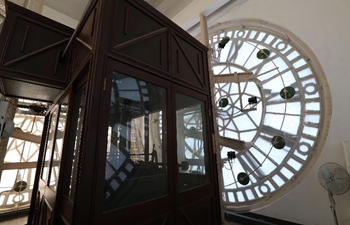LONDON, Dec. 23 (Xinhua) -- The holiday home in Cornwall where the famous English writer Daphne Du Maurier wrote her first novel has been given protection, Britain's Department for Digital, Culture, Media and Sport (DCMS) said Saturday.
The one time former shipyard on the Cornish coast was where Du Maurier wrote "The Loving Spirit", her first novel, and later "Gerald: A Portrait".
Originally developed as a boatyard and quayside in the 1800s, Ferryside in Cornwall was bought by the Du Maurier family in 1926. Du Maurier later remembered "The Loving Spirit" was inspired by the sense of freedom that my new existence at Ferryside brought".
A spokesperson for DCMS said: "The building is a former shipwright's workshop, yard and quay, constructed of local granite in the early 1800s. It is an important survivor of Cornwall's maritime heritage and reflects the social developments in the region."
The original quay was turned into a domestic garden, the sail loft becoming bedrooms and a bathroom, and the former boat store becoming the family sitting room.
The Du Maurier family's transformation of the building into a holiday home in the late 1920s reflects a wider trend for second homes which began in the 19th century. These second home buyers formed a crucial part of the Cornish economy in the 20th century.
Christian Browning, Du Maurier's son said: "My mother adored the house and fell in love with Cornwall which was to be the backdrop of her most famous novels. I feel sure that she would be immensely proud that Historic England have granted Ferryside a Grade II listing."
Duncan Wilson, CEO of Historic England said: "Ferryside is one of many precious, historic buildings across England which have the power to captivate and delight... These places bring our history to life; they give it a personal dimension which transcends time."
Heritage Minister John Glen said: "Ferryside is the site where Dame Daphne Du Maurier's love affair with Cornwall began -- the region that inspired her works, which are some of the greatest novels of the 20th century. I hope that both the building and Du Maurier's work continue to inspire people for many years to come."

















